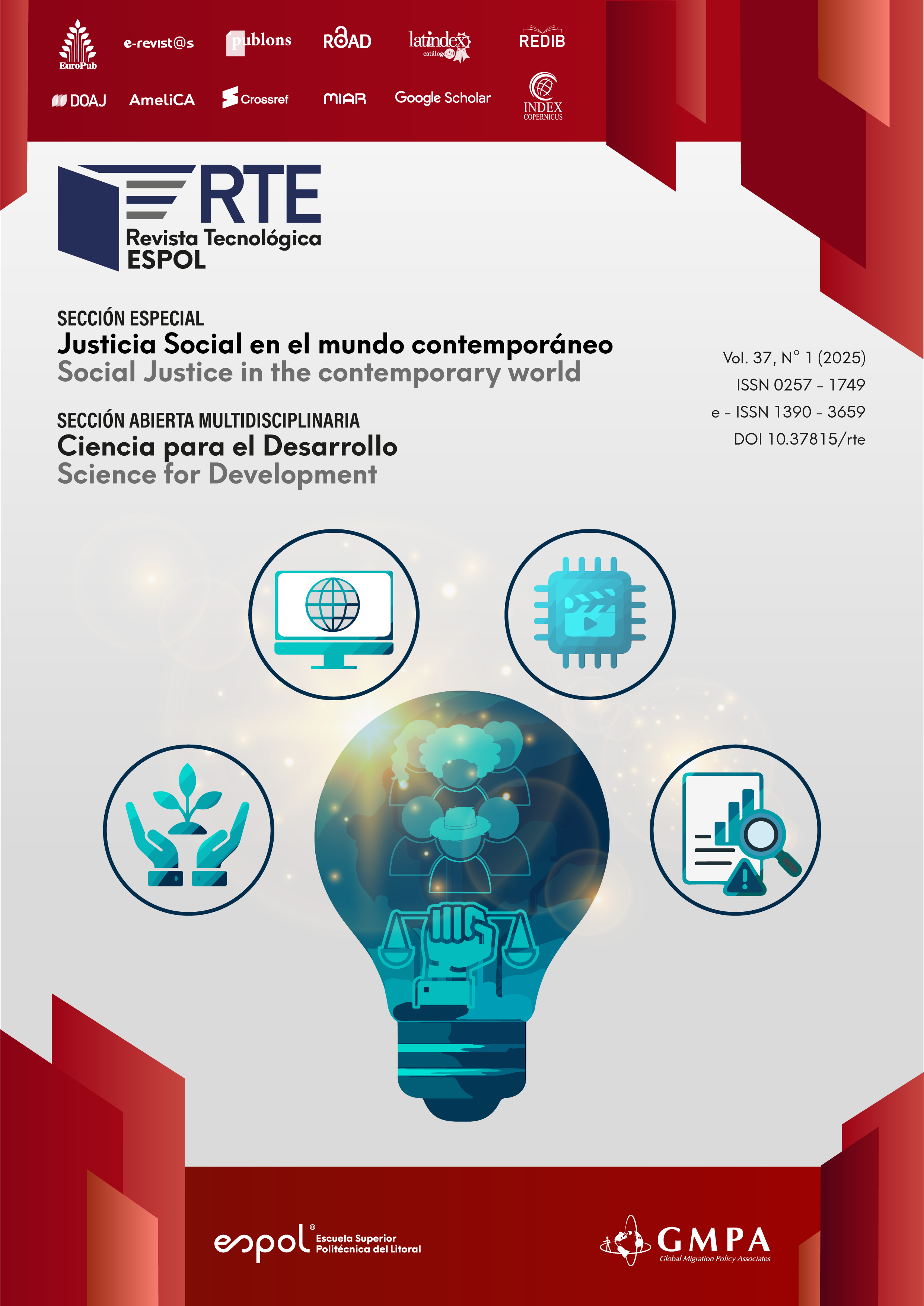Los dispositivos de monitorización de signos vitales desempeñan un papel importante en el ámbito médico al permitir el seguimiento continuo de los pacientes. No obstante, estos equipos actualmente dependen de baterías o suministro eléctrico para su funcionamiento, pudiendo presentar limitaciones e inconvenientes como la pérdida de datos y la interrupción de la vigilancia constante. A pesar de ello, la creciente implementación de mecanismos autónomos de recolección de energía podría reemplazar los métodos convencionales de alimentación. Esta revisión sistemática de literatura se llevó a cabo con el objetivo de identificar los mecanismos de captación de energía más apropiados para dispositivos de seguimiento de constantes vitales en seres vivos. El análisis incluyó tanto fuentes ambientales como aquellas producidas por el cuerpo humano. Se proporcionó también información sobre los signos vitales más comúnmente monitorizados, así como la ubicación del dispositivo en el cuerpo. También se especificó la producción energética generada por las tecnologías consideradas en las publicaciones analizadas. Los mecanismos más utilizados fueron el triboeléctrico y piezoeléctrico, mientras que la radiofrecuencia y triboeléctrico obtuvieron una mayor producción energética. Cabe recalcar que los mecanismos evaluados son aplicables tanto en personas como otros seres vivos pues se comparten ciertas similitudes con los animales domésticos.

Esta obra está bajo una licencia internacional Creative Commons Atribución-NoComercial 4.0.
Referencias
Ahn, S., Cho, Y., Park, S., Kim, J., Sun, J., Ahn, D., Lee, M., Kim, D., Kim, T., Shin, H., & Park, J.-J. (2020). Wearable multimode sensors with amplified piezoelectricity due to the multi local strain using 3D textile structure for detecting human body signals. Nano Energy, 74, 104932. https://doi.org/10.1016/j.nanoen.2020.104932
Ali, A., Shaukat, H., Bibi, S., Altabey, W. A., Noori, M., & Kouritem, S. A. (2023). Recent progress in energy harvesting systems for wearable technology. Energy Strategy Reviews, 49, 101124. https://doi.org/10.1016/j.esr.2023.101124
Blaževic, D., Philipp, S., Ruuskanen, J., Dizdarevic, J., Niiranen, R., Rasilo, P., & Jukan, A. (2022). A farm animal kinetic energy harvesting device for IoT applications. En P. Balaya, N. C. Das, & S. Xu (Eds.), Energy Harvesting and Storage: Materials, Devices, and Applications XII (p. 14). SPIE. https://doi.org/10.1117/12.2618298
Bose, S., Shen, B., & Johnston, M. L. (2020). 26.5 A 20µW heartbeat detection system-on-chip powered by human body heat for self-sustaining wearable healthcare. 2020 IEEE International Solid- State Circuits Conference - (ISSCC), 408-410. https://doi.org/10.1109/ISSCC19947.2020.9063071
Chung, H. U., Rwei, A. Y., Hourlier-Fargette, A., Xu, S., Lee, K., Dunne, E. C., Xie, Z., Liu, C., Carlini, A., Kim, D. H., Ryu, D., Kulikova, E., Cao, J., Odland, I. C., Fields, K. B., Hopkins, B., Banks, A., Ogle, C., Grande, D., … Rogers, J. A. (2020). Skin-interfaced biosensors for advanced wireless physiological monitoring in neonatal and pediatric intensive-care units. Nature Medicine, 26(3), 418-429. https://doi.org/10.1038/s41591-020-0792-9
Dionisi, A., Marioli, D., Sardini, E., & Serpelloni, M. (2016). Autonomous wearable system for vital vigns measurement with energy-harvesting module. IEEE Transactions on Instrumentation and Measurement, 65(6), Article 6. https://doi.org/10.1109/TIM.2016.2519779
Fahad, M. M., Reza, M. S., Prasad, G., Jaisankar, S. N., Kim, K. J., & Kim, H. (2022). Polysomnographic observation using triboelectric pressure sensor composed of polymer-pairs Hhaving coarse surface. Fibers and Polymers, 23(6), 1490-1499. https://doi.org/10.1007/s12221-022-4969-3
Fu, K., Zhou, J., Wu, H., & Su, Z. (2021). Fibrous self-powered sensor with high stretchability for physiological information monitoring. Nano Energy, 88, 106258. https://doi.org/10.1016/j.nanoen.2021.106258
García-Holgado, A., & García-Peñalvo, F. J. (2019). Ecosistemas software: Análisis de revisiones sistemáticas de literatura. TICAI 2018 TICs para el Aprendizaje de la Ingeniería, 91-98. http://hdl.handle.net/10366/140507
Ghafouri, T., & Manavizadeh, N. (2023). A 3D-printed millifluidic device for triboelectricity-driven pH sensing based on ZnO nanosheets with super-Nernstian response. Analytica Chimica Acta, 1267, 341342. https://doi.org/10.1016/j.aca.2023.341342
Ghosh, S. K., Kim, M. P., Na, S., Lee, Y., Park, J., Cho, S., Cho, J., Kim, J. J., & Ko, H. (2022). Ultra-stretchable yet tough, healable, and biodegradable triboelectric devices with microstructured and ionically crosslinked biogel. Nano Energy, 100, 107438. https://doi.org/10.1016/j.nanoen.2022.107438
Gil, B., Ip, H., Kassanos, P., Lo, B., Yang, G.-Z., & Anastasova, S. (2022). Smart implanted access port catheter for therapy intervention with pH and lactate biosensors. Materials Today Bio, 15, 100298. https://doi.org/10.1016/j.mtbio.2022.100298
Gunasekhar, R., & Anand Prabu, A. (2023). Polyvinylidene fluoride/aromatic hyperbranched polyester 2nd generation based triboelectric sensor for polysomnographic and health monitoring applications. Sensors and Actuators A: Physical, 355, 114311. https://doi.org/10.1016/j.sna.2023.114311
Habibagahi, I., Omidbeigi, M., Hadaya, J., Lyu, H., Jang, J., Ardell, J. L., Bari, A. A., & Babakhani, A. (2022). Vagus nerve stimulation using a miniaturized wirelessly powered stimulator in pigs. Scientific Reports, 12(1), 8184. https://doi.org/10.1038/s41598-022-11850-0
Hadiyoso, S., Tulloh, R., Rohmah, Y., & Alfaruq, A. (2021). Design and development armband vital sign monitor for health-care monitoring. Journal of Medical Signals & Sensors, 11(3), 208. https://doi.org/10.4103/jmss.JMSS_29_20
He, J., Li, S., Hou, X., Zhou, Y., Li, H., Cui, M., Guo, T., Wang, X., Mu, J., Geng, W., & Chou, X. (2022). A non-contact flexible pyroelectric sensor for wireless physiological monitoring system. Science China Information Sciences, 65(2), 122402. https://doi.org/10.1007/s11432-020-3175-6
Heidari, H., Onireti, O., Das, R., & Imran, M. (2021). Energy harvesting and power management for IoT devices in the 5G era. IEEE Communications Magazine, 59(9), 91-97. https://doi.org/10.1109/MCOM.101.2100487
Hezekiah, J. D. K., Ramya, K. C., Radhakrishnan, S. B. K., Kumarasamy, V. M., Devendran, M., Ramalingam, A., & Maheswar, R. (2023). Review of next-generation wireless devices with self-energy harvesting for sustainability improvement. Energies, 16(13), 5174. https://doi.org/10.3390/en16135174
Isioto, N. N., Nwabueze, C., & Dickson, R. (2022). Comparative evaluation of energy harvesting techniques for sustainable energy in low power applications. Int. J. Innov. Eng. Technol. Sci., 5(2), Article 2.
Kang, S., Kim, S. H., Lee, H. B., Mhin, S., Ryu, J. H., Kim, Y. W., Jones, J. L., Son, Y., Lee, N. K., Lee, K., Kim, Y., Jung, K. H., Han, H., Park, S. H., & Kim, K. M. (2022). High-power energy harvesting and imperceptible pulse sensing through peapod-inspired hierarchically designed piezoelectric nanofibers. Nano Energy, 99, 107386. https://doi.org/10.1016/j.nanoen.2022.107386
Kim, D. H., Shin, H. J., Lee, H., Jeong, C. K., Park, H., Hwang, G., Lee, H., Joe, D. J., Han, J. H., Lee, S. H., Kim, J., Joung, B., & Lee, K. J. (2017). In vivo self‐powered wireless transmission using biocompatible flexible energy harvesters. Advanced Functional Materials, 27(25), 1700341. https://doi.org/10.1002/adfm.201700341
Kitchenham, B., & Charters, S. (2007). Guidelines for performing Systematic Literature Reviews in software engineering. 2.
Li, Z., Zhu, G., Yang, R., Wang, A. C., & Wang, Z. L. (2010). Muscle‐driven in vivo nanogenerator. Advanced Materials, 22(23), 2534-2537. https://doi.org/10.1002/adma.200904355
Lin, W., Wei, Y., Wang, X., Zhai, K., & Ji, X. (2023). Study on human motion energy harvesting devices: A review. Machines, 11(10), Article 10. https://doi.org/10.3390/machines11100977
Lin, Z., Chen, J., Li, X., Zhou, Z., Meng, K., Wei, W., Yang, J., & Wang, Z. L. (2017). Triboelectric nanogenerator enabled body sensor network for self-powered human heart-rate monitoring. ACS Nano, 11(9), 8830-8837. https://doi.org/10.1021/acsnano.7b02975
Lyu, H., Wang, Z., & Babakhani, A. (2020). A UHF/UWB hybrid RFID tag with a 51-m energy-harvesting sensitivity for remote vital-sign monitoring. IEEE Transactions on Microwave Theory and Techniques, 68(11), 4886-4895. https://doi.org/10.1109/TMTT.2020.3017674
Mahmood, A. I., Gharghan, S. K., Eldosoky, M. A., & Soliman, A. M. (2023). Energy harvesting–based biomedical applications: A review. 020022. https://doi.org/10.1063/5.0119283
Maity, K., Mondal, A., & Saha, M. C. (2023). Cellulose nanocrystal-based all-3D-printed pyro-piezoelectric nanogenerator for hybrid energy harvesting and self-powered cardiorespiratory monitoring toward the human–machine interface. ACS Applied Materials & Interfaces, acsami.2c21680. https://doi.org/10.1021/acsami.2c21680
Manzano Ramos, E. A., & Bejarano Reyes, M. A. (2021). Implementación de un sistema de monitoreo a nivel de prototipo de signos vitales: Pulso, temperatura y saturación de oxígeno para pacientes. Interfases, 014. https://doi.org/10.26439/interfases2021.n014.5168
Mao, J., Zhou, P., Wang, X., Yao, H., Liang, L., Zhao, Y., Zhang, J., Ban, D., & Zheng, H. (2023). A health monitoring system based on flexible triboelectric sensors for intelligence medical internet of things and its applications in virtual reality. Nano Energy, 118, 108984. https://doi.org/10.1016/j.nanoen.2023.108984
Moher, D., Liberati, A., Tetzlaff, J., Altman, D. G., & The PRISMA Group. (2009). Preferred reporting items for Systematic Reviews and Meta-Analyses: The PRISMA statement. PLoS Medicine, 6(7), e1000097. https://doi.org/10.1371/journal.pmed.1000097
Mokhtari, S., & Al Ahmad, M. (2019). Portable piezoelectric cardiac abnormality detection. Alexandria Engineering Journal, 58(3), 1053-1061. https://doi.org/10.1016/j.aej.2019.09.008
Na, Y., Kim, S., Mallem, S. P. R., Yi, S., Kim, K. T., & Park, K.-I. (2022). Energy harvesting from human body heat using highly flexible thermoelectric generator based on Bi2Te3 particles and polymer composite. Journal of Alloys and Compounds, 924, 166575. https://doi.org/10.1016/j.jallcom.2022.166575
Navia, M., Bonastre, A., & Campelo, J. C. (2015). Hybrid monitoring proposal for wireless sensor network. 2015 Asia-Pacific Conference on Computer Aided System Engineering, 320-324. https://doi.org/10.1109/APCASE.2015.63
Page, M. J., McKenzie, J. E., Bossuyt, P. M., Boutron, I., Hoffmann, T. C., Mulrow, C. D., Shamseer, L., Tetzlaff, J. M., Akl, E. A., Brennan, S. E., Chou, R., Glanville, J., Grimshaw, J. M., Hróbjartsson, A., Lalu, M. M., Li, T., Loder, E. W., Mayo-Wilson, E., McDonald, S., … Moher, D. (2021). The PRISMA 2020 statement: An updated guideline for reporting systematic reviews. BMJ, n71. https://doi.org/10.1136/bmj.n71
Panahi, A., Hassanzadeh, A., & Moulavi, A. (2020). Design of a low cost, double triangle, piezoelectric sensor for respiratory monitoring applications. Sensing and Bio-Sensing Research, 30, 100378. https://doi.org/10.1016/j.sbsr.2020.100378
Pozo Fernández, B., Núñez Estévez, C., Fernández Hermida, X., & Marcos Acevedo, J. (2018). Feasibility analysis of energy harvesting with piezoelectric devices in oceano graphic buoys. Instrumentation Viewpoint, 20, 57. http://hdl.handle.net/2117/126267
Qiu, H.-J., Song, W.-Z., Wang, X.-X., Zhang, J., Fan, Z., Yu, M., Ramakrishna, S., & Long, Y.-Z. (2019). A calibration-free self-powered sensor for vital sign monitoring and finger tap communication based on wearable triboelectric nanogenerator. Nano Energy, 58, 536-542. https://doi.org/10.1016/j.nanoen.2019.01.069
Shuvo, M. M. H., Titirsha, T., Amin, N., & Islam, S. K. (2022). Energy harvesting in implantable and wearable medical devices for enduring precision healthcare. Energies, 15(20), Article 20. https://doi.org/10.3390/en15207495
Sun, J.-G., Yang, T.-N., Wang, C.-Y., & Chen, L.-J. (2018). A flexible transparent one-structure tribo-piezo-pyroelectric hybrid energy generator based on bio-inspired silver nanowires network for biomechanical energy harvesting and physiological monitoring. Nano Energy, 48, 383-390. https://doi.org/10.1016/j.nanoen.2018.03.071
Wang, H. L., Guo, Z. H., Pu, X., & Wang, Z. L. (2022). Ultralight iontronic triboelectric mechanoreceptor with high specific outputs for epidermal eletronics. Nano-Micro Letters, 14(1), 86. https://doi.org/10.1007/s40820-022-00834-4
Wang, M., Zhang, J., Tang, Y., Li, J., Zhang, B., Liang, E., Mao, Y., & Wang, X. (2018). Air-flow-driven triboelectric nanogenerators for self-powered real-time respiratory monitoring. ACS Nano, 12(6), 6156-6162. https://doi.org/10.1021/acsnano.8b02562
Wang, S., Tai, H., Liu, B., Duan, Z., Yuan, Z., Pan, H., Su, Y., Xie, G., Du, X., & Jiang, Y. (2019). A facile respiration-driven triboelectric nanogenerator for multifunctional respiratory monitoring. Nano Energy, 58, 312-321. https://doi.org/10.1016/j.nanoen.2019.01.042
Wen, D.-L., Huang, P., Li, B.-Y., Qiu, Y., Wang, Y.-L., Zhang, X.-R., Deng, H.-T., & Zhang, X.-S. (2023). Silk fibroin/Ag nanowire-based multifunctional sensor for wearable self-powered wireless multi-sensing microsystems. Nano Energy, 113, 108569. https://doi.org/10.1016/j.nanoen.2023.108569
Wu, Y., Cui, X., Wu, H., & Su, Z. (2023). All-polymeric fibrous triboelectric nanogenerator for self-powered intelligent active motions monitoring system. Chemical Engineering Journal, 469, 143708. https://doi.org/10.1016/j.cej.2023.143708
Yi, Q., Pei, X., Das, P., Qin, H., Lee, S. W., & Esfandyarpour, R. (2022). A self-powered triboelectric MXene-based 3D-printed wearable physiological biosignal sensing system for on-demand, wireless, and real-time health monitoring. Nano Energy, 101, 107511. https://doi.org/10.1016/j.nanoen.2022.107511
Zhang, L., Fang, R., Li, X., Tian, C., Li, J., Cui, X., & Zhang, H. (2023). Self-powered physiological monitoring strategy enabled by adaptive dual-network thermogalvanic hydrogels. Sensors and Actuators A: Physical, 361, 114604. https://doi.org/10.1016/j.sna.2023.114604







